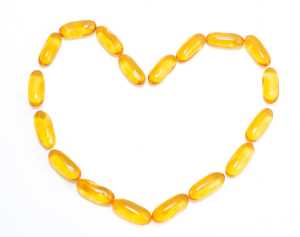Omega 3 Index & Women.
 Although I have previously written about the values of Omega 3 Fatty Acids, this item was prompted by the appearance of 3 new articles that crossed my desk this week.
Although I have previously written about the values of Omega 3 Fatty Acids, this item was prompted by the appearance of 3 new articles that crossed my desk this week.
Omega 3 fatty acids, particularly EPA and DHA are considered essential. Our body doesn't make them but we do need them from our diet. Omega 3 has become very popular among health care professionals and supplement advocates.
The EPA / DHA versions of Omega 3 are “animal” based and required by humans.
The vegetable version, Alpha-linolenic–acid (ALA), has to be converted to EPA / DHA after we eat it.
ALA is found in foods like flax seed and walnut oil. Our conversion rate is very poor - less than 10% range. 1
Low long chain omega-3 fatty acid status in middle-aged women
Gellert, Sandra, et.al. PLEFA Journal , 2017.01.009
The low LC n-3 PUFA status in middle-aged German women (40–60 years) is related to an increased risk of cardiovascular diseases and possibly other diseases and should therefore be improved.
Although the benefits of Omega 3 intake have been well established, a German study reported that 63% of middle aged German women have low omega 3 and show high risk for heart disease.
The study used a measure known as the “Omega 3 Index” which is the % concentration in red blood cells.
- very low = less than 4%
- low = 4 to 6%
- moderate = 6 to 8%
- high = over 8%.
The study focused on 471 women ages 40-60 (from an original cohort study of 2367). The average Omega 3 Index score was 5.49%.
The results showed 97% had scores below the 8% value, 63% were rated as “low” risk (scores between 4 - 6%) and 9% were at the greatest risk with scores below 4%.
Dietary reference intakes (DRI) by several expert scientific organizations fall in the range of 250-500 mg/ day for EPA and DHA. But experienced practitioners recommend twice those levels.
Using the brand I have used for 40 years would mean 6 capsules/day.
It is disturbing that in spite of knowledge and popularity of this nutrient there appears to be wide spread under consumption.
Share
Share on Facebook
Share on Google Plus
References
1. Conversion Efficiency of ALA to DHA in humans. A discussion of the metabolic pathway by which dietary ALA can be converted by a series of sequential desaturation (D) and elongation (E) reactions into EPA and then DHA
2. Two-thirds of middle-aged German women have low omega-3: Increased risk of heart disease - More than 70% of middle-aged women are at an increased risk of heart disease risk because of low omega-3 status, says a new German population study that recommends nearly all should increase intake.